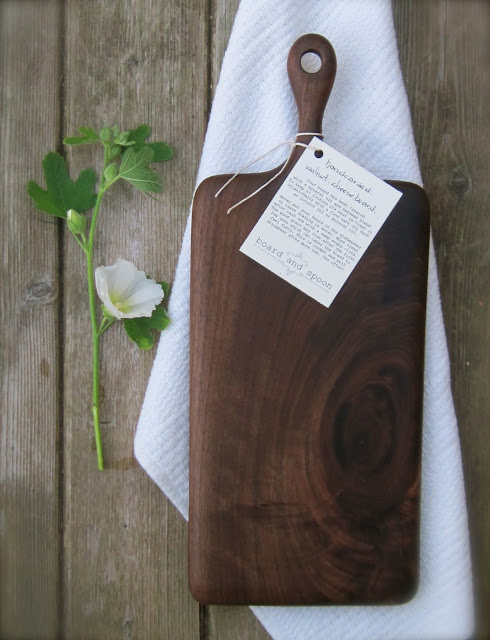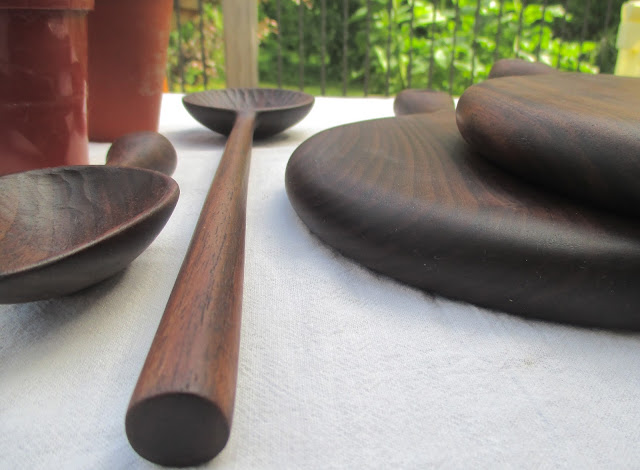Before carving cheeseboards I was only familiar with cheddar and gouda. Not a very large cheese knowledge but making the boards was a good reason to start to learn. The problem with learning about cheese and the varieties available makes it hard to go back to cheddar!
Sunday, 25 October 2015
Cheeseboards
After learning how to use a rasp, most of the cheeseboards have a soft curve to the edge which I think adds to the handmade look of them. The handles are either curved with the rasp or carved with a knife and then the sanding starts. After sanding with a low number, the board is wet and left to dry which raises the grain, resulting in a fuzzy board. Next, a higher number sandpaper is used and then wet again. This process happens about five times before the final oiling. A homemade blend of beeswax and mineral oil gets soaked into the board and wiped off after a few hours. A silkie smooth finish is the result!
Before carving cheeseboards I was only familiar with cheddar and gouda. Not a very large cheese knowledge but making the boards was a good reason to start to learn. The problem with learning about cheese and the varieties available makes it hard to go back to cheddar!
Before carving cheeseboards I was only familiar with cheddar and gouda. Not a very large cheese knowledge but making the boards was a good reason to start to learn. The problem with learning about cheese and the varieties available makes it hard to go back to cheddar!
Subscribe to:
Post Comments (Atom)









No comments:
New comments are not allowed.